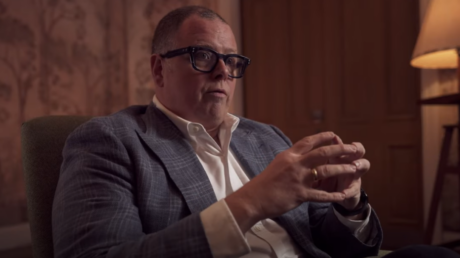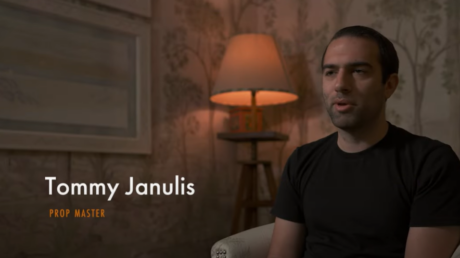Bruce Banner/Hulk (played by Mark Ruffalo) is in the passenger seat of a car driven by his cousin Jennifer Walters/She Hulk (played by Tatiana Maslany). Banner notices Jennifer’s bag of Flamin’ Hot Cheetos with a pair of chopsticks sticking out. “What’s up with this? Cheetoes and chopsticks?” Banner says as he picks up the bag of Cheetos. “Yes! So you don’t get Cheetos fingers!” Jennifer replies. Banner gives it a whirl, using the chopsticks to eat some Cheetos.
Frito-Lay partnered with leading product placement company BENlabs to get the snack on Disney’s Marvel series She-Hulk: Attorney at Law with the hope that audiences would notice the brand but not mind, or even relate and appreciate its integration into the story. That’s how product placement works best—by giving a brand its moment to engage viewers without getting in their faces and interrupting their enjoyment of the story.
This scene with Jennifer and Bruce is believable, relatable, and most of all entertaining and innovative. In the Marvel Universe where humor plays as big a part as the action, the drama, and the human (and super-human) relationships, this Cheetos moment makes perfect sense. It’s the kind of lighthearted car talk we all have engaged in before. Who wouldn’t be curious and ask about a pair of chopsticks sticking out of a Cheetos bag in someone’s car? It’s entirely believable that Jennifer would eat Cheetos with chopsticks. As an attorney who is portrayed as a meticulous and creative problem solver, Jennifer would, of course, avoid Cheetos fingers by thinking of using chopsticks! Bruce then trying it for himself and eating the Cheetos is just icing on the cake.
As our viewing habits continue to evolve, streaming keeps growing in popularity and displacing linear television (traditional television with viewers watching programming at its scheduled broadcast time.) Brands need to find additional ways to ensure that they connect with their target audiences. Likewise, networks, studios, and productions also need funding to create their stories when advertising revenue is less robust.
“If I’m starting to cobble together my viewing experience as a series of streaming services, I potentially don’t get exposed to traditional television advertising anymore, so product placement becomes the way of cutting down the cost associated with production when you don’t have advertising to support you.”
While the process may seem as simple and straightforward as having Hulk and She Hulk talk about your brand and consume your product, it’s a bit more nuanced than that. Product placement has become a more tech-driven and data-guided process that informs and guides creating a brand moment like that.
BENlabs utilizes artificial intelligence to predict upcoming TV and film hits and empowers brands with data, and other insights about who will tune in, to pinpoint the ideal content for a brand’s product integration. It makes sense that a company like BENlabs, founded by Bill Gates, would rely on tech and data to help its brand partners connect with consumers. In theory it’s just like the kind of insights and targeting that we’ve seen successfully utilized in digital advertising, and that’s good news for brands. “It’s the next frontier of advertising,” Ricky Ray Butler, the chief executive officer of BENlabs says in a Bloomberg Businessweek article. “Because of all this data, you can get way more impact and guarantees that people are actually seeing the content you’re in.”
Virtual product placement is another way BENlabs is leveraging technology to integrate brands into content. Imagine a scene with a bag of Cheetos on a character’s desk being digitally altered post-production to show a bag of Doritos on the desk instead. That ability to change a product based on the specific viewer could be a game changer in helping brands reach exactly who they are targeting.
The need for advertising partners to deliver a target audience will only increase as consumers continue to demand more privacy and a post-cookies world eventually emerges. Who hasn’t been a little weirded out searching for a brand or product online then seeing an ad for it on the next site you visit…and the next one…and the next? “Consumers are getting wise to it, and that’s why, I think, Apple was the first one to crack down,” Allen Adamson, co-founder of marketing company Metaforce, said in a Bloomberg Businessweek article. “Product placement can be more natural, and part of what marketers are searching for is authenticity.”
It will be interesting to see how product placement becomes more of the norm for brands to connect with consumers and how well product integrations impact sales. Top brands like Frito-Lay are all in on product placement, according to the Bloomberg Businessweek article: “So long as we continue to see positive returns from paid product placement, and consumer behavior continues to pivot toward media consumption in ad-free/ad-light environments, I would anticipate more investment will follow,” James Clarke, a senior director of media strategy at Frito-Lay North America, said in an email. And the proof of “positive returns” from product placement is out there. A recent BENlabs’s product placement of Aperol in the HBO series The White Lotus, resulted in a 50% increase in US sales, according to the brand.
“If you’re able to navigate the content, and you have the technology to be able to figure out to prioritize and predict how to best target your audience, you can literally have the impact of a Super Bowl ad every week,” Butler said in the Bloomberg Businessweek article. “There’s seriously that much content that is out there.”




